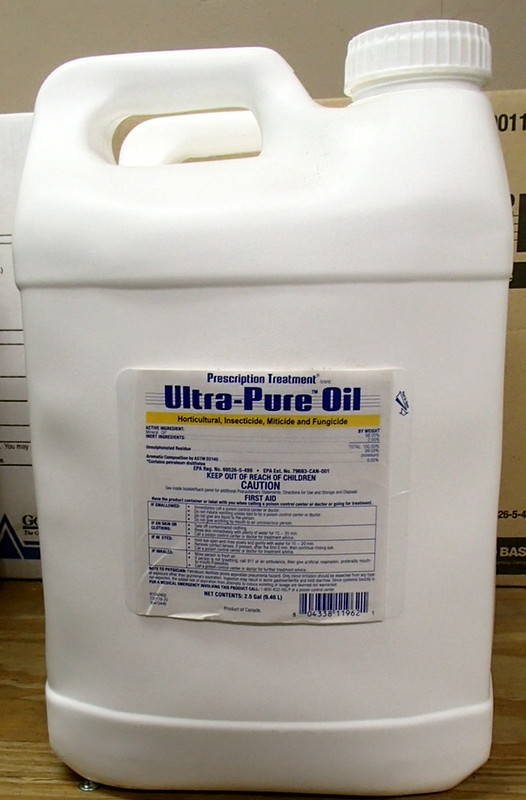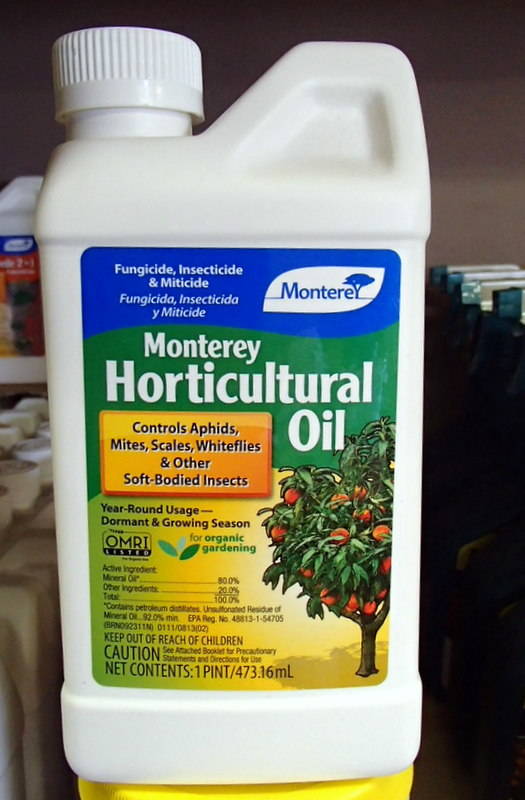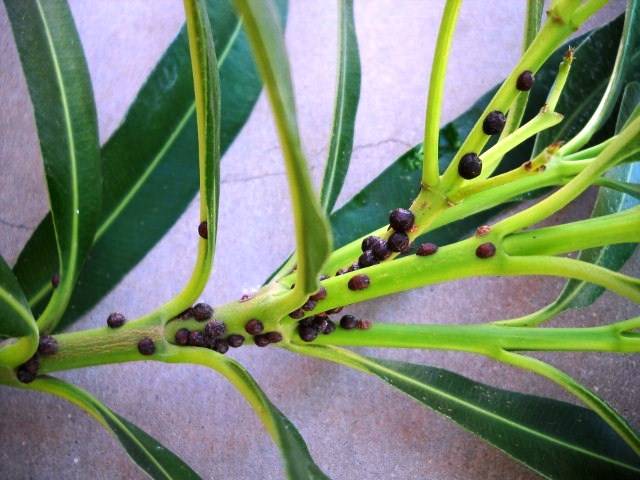Best to apply pest control for trees is winter



The most effective pest control measures for fruit, shade or ornamental trees during 2019 will be applied this December and January. Many gardeners consider the application of oils as an organic method of controlling future pests. In the purest sense, it is not organic. But applications of oils during the winter reduce the need for hard pesticides later.
No, this is not motor oil but a highly refined petroleum oil such as those derived from paraffin, mineral oil and even some vegetable oils used for organic production. Spray oils are combined with an emulsifying agent as a part of the container mix so it can be diluted with water when spraying.
Application rates may change with the time of year, so always consult the label. Many horticultural oils used for pest control are also used in the spring and early summer months when temperatures are cooler. Never apply it when the plant is flowering, when pollinators like honeybees are present or during hot weather.
Winter or dormant oil applications must be applied at the right time and done correctly if they are to be effective. The perfect time for first spraying is after leaf drop and when tree pruning has been completed. The perfect weather is when it’s warm, the sun is out and there is no wind at all.
When making this spray application, the weather must be warm because all insects become active during warm weather. It must not be windy or the oil sprays are pushed off course and applied unevenly. To get good control, that blanket of oil should be even and uninterrupted, covering most of the tree.
The entire tree — top to bottom, tops of the limbs and bottoms of the limbs — is sprayed. This spray covers the tree in a blanket of thin oil, suffocating future insect problems that are riding out the bad winter weather on the trunk and tree limbs. They are waiting for spring. If not interrupted, they launch a new surge of spring and summer feeding and egg laying and gardening problems.
These oils come under a variety of names, including dormant oil, spray oil, horticultural oil, dormant spray and others. It’s not the same as neem oil, which is a true natural insecticide.
Most ugly, overgrown shrubs can be cut nearly to the ground, and they will grow back. Some grow back faster than others, but if the shrubs are truly ugly in their present condition, it might be worth cutting them back and letting them regrow into a new, young looking shrub.
This is a legitimate pruning technique called rejuvenation pruning. An application of a tree and shrub fertilizer in February or March will cause these pruned shrubs to grow back faster.
If you aren’t sure whether pruning will work, look at the base of the plant. Do you see any small suckers at the base? The suckers are a good indicator the plant will grow back easily if cut way back.
Fertilizing a winter lawn now prevents it from turning brown due to cold damage this winter. If you are not sure how much to apply, take the first number on the fertilizer bag and divide it into 100. The resulting number tells you how many pounds of fertilizer to apply for each 1,000 square feet of lawn area. By the way, now is an excellent time to apply weed killers to lawns to control difficult, perennial weeds.
Wait until the last week of February or first week of March to prune grapes. Grapes get damaged during the winter months in the Mojave Desert, even when they’re watered properly. It’s best to wait for that time period of yucky weather to pass before pruning. Roses, on the other hand, are typically pruned here in January.
There is no reason to apply fertilizers during the winter months unless your plants are actively growing, such as some of the winter vegetables and annual flowers. Fertilize winter vegetables and annual flowers lightly about once a month. Apply granular fertilizer about 4 inches in parallel with the row of vegetables. Yes, fertilize vegetables during the winter months.
Don’t prune palm trees during the fall and winter months. This is the absolute worst time for planting or pruning these trees. Plant them during the spring or summer months. Prune them in the spring when their flowers are present but before they form seed. At this time both fronds and flowers can be removed so seeds are not a problem.
Q. What is the best fruit tree for containers?
A. That is a loaded question because there are many types of fruit trees that grow here. Plant a fruit tree that stays small. Some citrus like kumquats and most lemons and limes stay small. Genetic dwarf or miniature fruit trees are a good choice. If it’s a tree sensitive to winter freezing temperatures, use a lightweight soil mix so the container can be moved.
• Light. All fruit trees need at least six hours of unfiltered sunlight every day. That’s a minimum. They perform better with more. If it is filtered or reflected light, then they need more hours.
• Wind. Many fruit trees, like some citrus and plums, cannot handle windy locations. Windy locations in a yard usually include narrow passages between buildings. These locations channel wind and increase its speed once it enters these narrower areas.
• Soil. Fill the container, leaving at least 2 inches unfilled at the top. Purchase a soil moisture meter for house plants and use this to judge how often to water. Push the probe end of the meter about 4 inches into the soil to measure moisture near the roots. Don’t let the meter register below six before irrigating again. In hot locations and smaller containers, apply water twice per day during the hot summer months.
• Watering. Apply enough water so that one-fourth of it drains out the bottom. The container should have drainage holes in the bottom.
• Double pots. If the container is in direct sunlight, place the container with the plant inside a larger container. The outside pot shades the outside walls of the inside container so that the soil and plant roots remain cooler.
• Fertilizer. Mineral fertilizers or a very nutrient-rich compost can be used. Apply mineral fertilizers twice a year — once in early spring and again after harvest. When using mineral fertilizers, the soil will eventually “run out” of soil organics. Repotting or replanting the tree is the best way to get organics back in the soil again.
Compost can be used as a substitution for mineral fertilizer if the compost is rich in nutrients. It should be applied only once a year in the spring.
• Replanting. Plants with roots growing in containers have a restricted area of soil where plant nutrients are available. This means that nutrients inside containers are exhausted after a few years. Replenish this soil with compost every three to five years.
Q. What is the best way of removing scale insects from a bay laurel tree?
A. Scale insects are difficult to control because they live under a hard, outer scale that covers their bodies. From under this outer protection, they suck plant juices, and insecticides seldom give much control.
Repeated oil sprays are probably the best method. Buy a spray oil that can be applied during the winter, late spring and early summer months. It may be called a summer oil, but these oils come under a variety of different names.
This oil can be mixed with water because it contains an emulsifier. The water and oil combination is sprayed on the tree limbs where the scale insects are located. This oil application suffocates the scale insect when it appears in the early spring, spring and early summer months.
Oil applications will also control the aphids. Ants like both aphids and scale insects and will spread them around on the trees, so get ants under control as well.
Bob Morris is a horticulture expert and professor emeritus of the University of Nevada, Las Vegas. Visit his blog at xtremehorticulture.blogspot.com. Send questions to Extremehort@aol.com.













